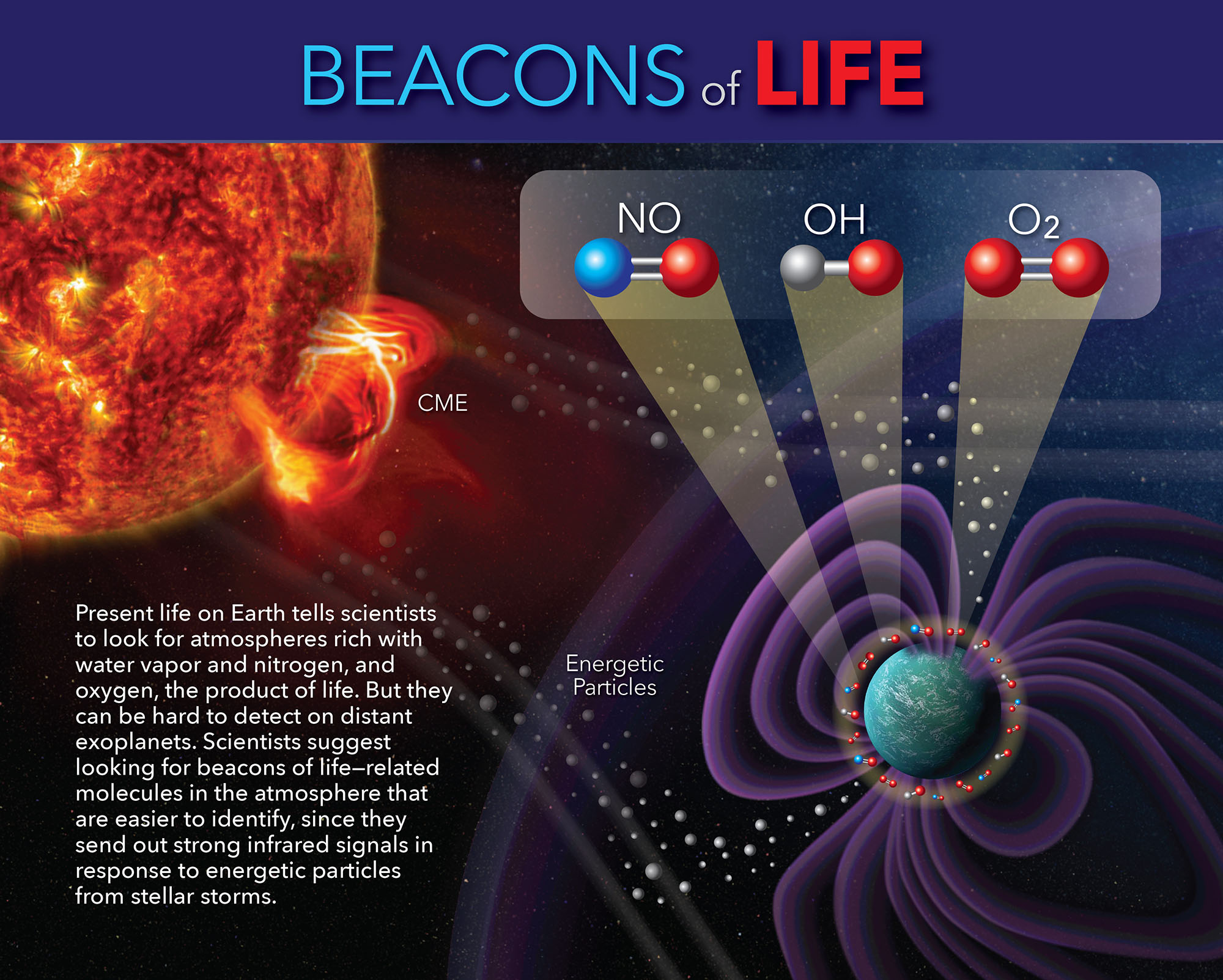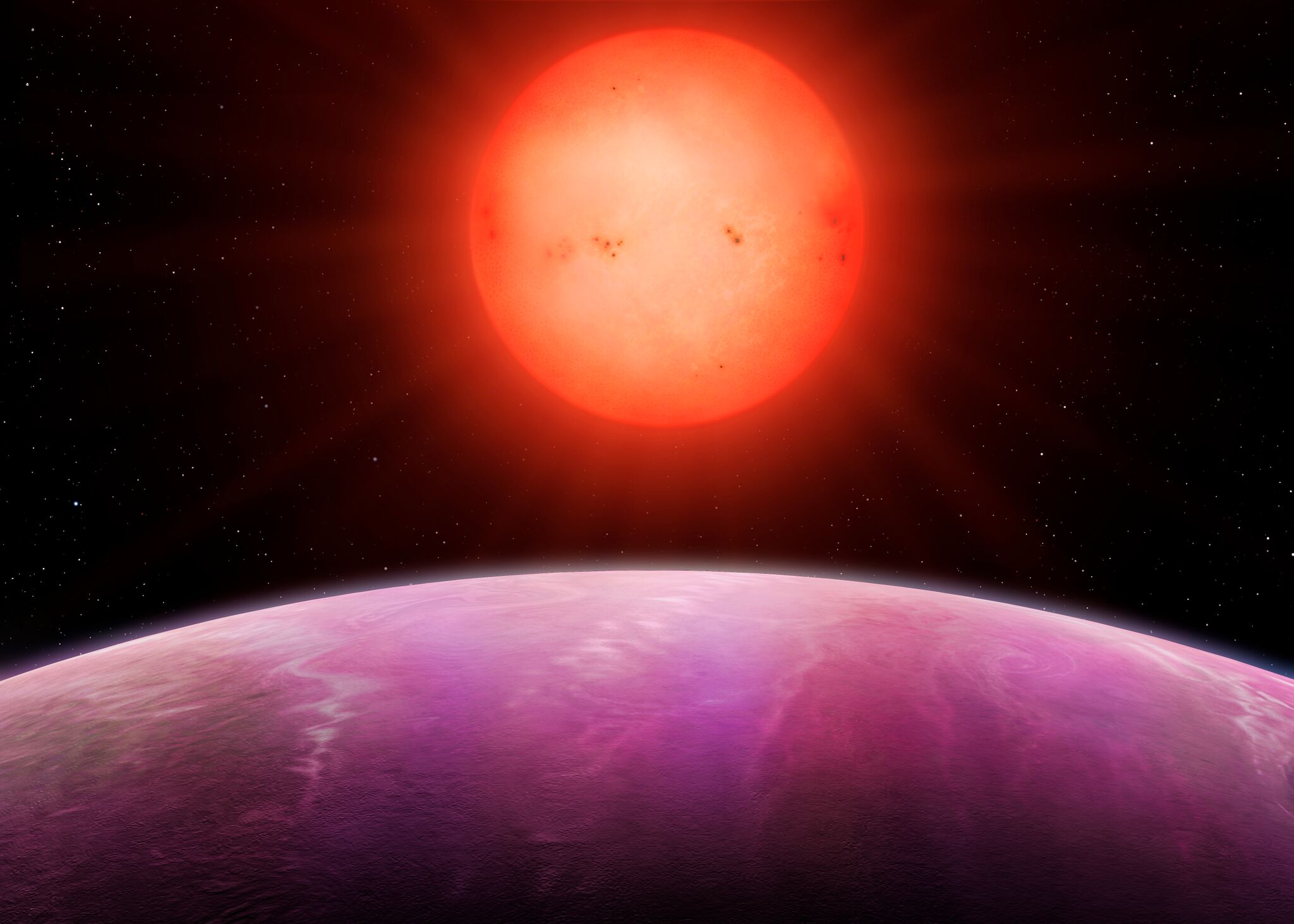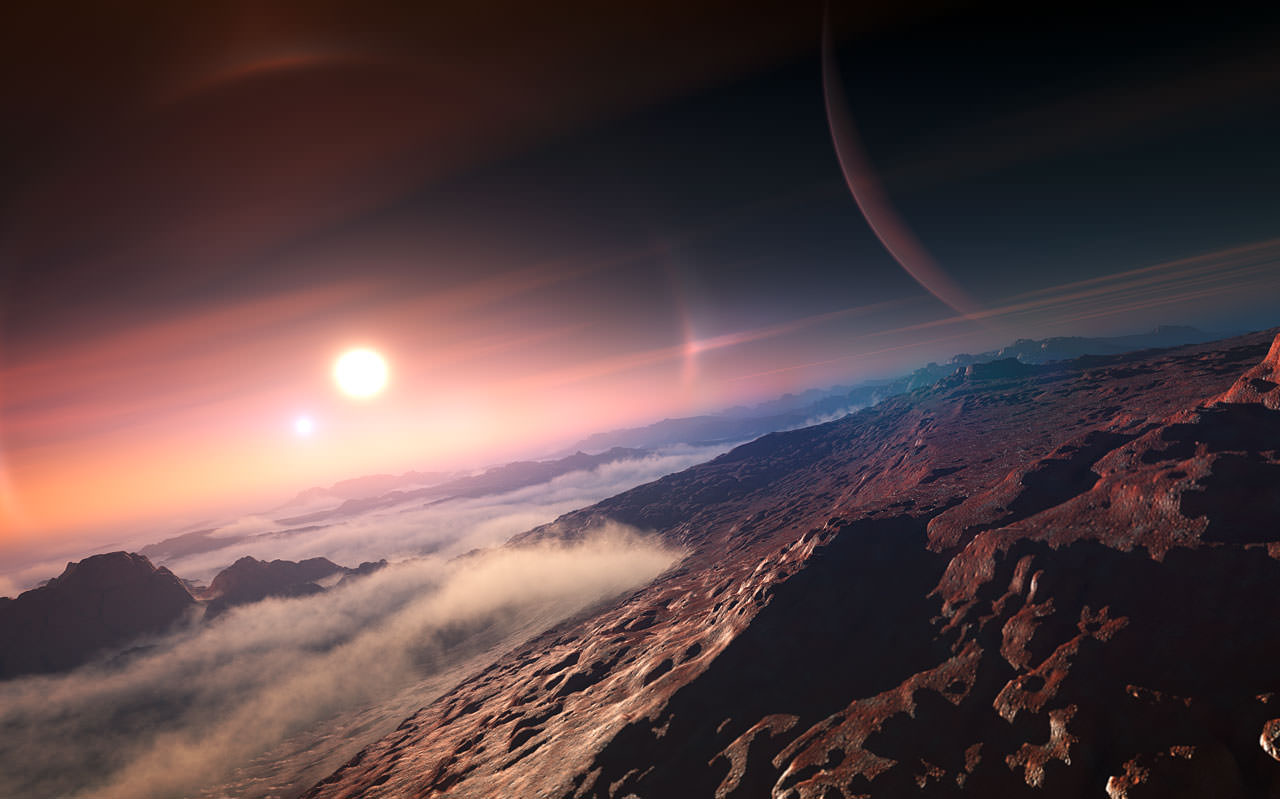Using the illuminated atmosphere of the planets to search for extraterrestrial life

The star illuminating the atmosphere of the planet
Despite the fact that recently astronomers have discovered thousands of exoplanets , the determination of the habitability of such a planet is a difficult task. Since we cannot study these planets directly, scientists have to look for indirect signs. They are known as biomarkers, and consist of the appearance of by-products of chemicals that we associate with organic life, appearing in the atmosphere of the planet.
In a new study, a team of NASA scientists is proposing a new method for finding potential signs of life outside the solar system. They offer to take advantage of frequent star storms that occur on young dwarf stars. These storms emit huge clouds of stellar material and radiation into space, interacting with exoplanet atmospheres and outstanding biomarkers that we can detect.
Recently, the study " Life-signaling lights in the atmosphere of exoplanets around stars of classes G and K " appeared in the journal Nature Scientific Reports. He was led by Vladimir Hayrapetyan, a leading astrophysicist in the Heliophysics Science Division (HSD ) of the Goddard Center for Space Flight NASA. His team included members of NASA's Langley Research Center, Science Systems and Applications Incorporated Center, SSAI, and American University.

Life signal lights can help researchers identify potentially habitable worlds.
Usually, researchers are looking for signs of the presence of oxygen and methane in the atmosphere of exoplanets, since they are well-known by-products of organic processes. Over time, these gases accumulate and reach concentrations that can be detected using spectroscopy. However, this approach takes a lot of time and requires astronomers to work many days when they try to see the spectrum from a distant planet.
Hayrapetyan and colleagues argue that on potentially inhabited worlds, one can also search for rougher signs. Such a search will be based on existing technologies and resources, and takes much less time. Arapetyan explained the following in a press release :
We are looking for molecules formed by the necessary fundamental conditions for the existence of life - especially molecular nitrogen, which consists of 78% of our atmosphere. These are basic bio-friendly molecules that can emit powerful infrared waves, which increases our chances of detecting them.
Using Earth as an example, Hayrapetyan and the team developed a new method to search for signs of such by-products as water vapor, nitrogen and oxygen in exoplanet atmospheres. But the most difficult thing is to take advantage of extreme space weather events occurring on active dwarf stars. These events expose the atmospheres of planets to outbreaks of radiation and cause chemical reactions that astronomers are able to see.

The artist's view of the cold red star above a distant exoplanet
In stars like our Sun, a yellow dwarf of class G, such weather events often occur in youth. But other yellow and orange stars remain active for billions of years, and storms of high-energy charged particles occur on them. And the red dwarfs of class M, the most common stars in the universe, remain active throughout their long life, periodically bombarding their planets with mini-flashes.
Reaching the exoplanets, the outbreaks react with the atmosphere and lead to the decomposition of nitrogen N 2 and oxygen O 2 into atoms, and water vapor into hydrogen and oxygen. The decomposed nitrogen and oxygen cause a cascade of chemical reactions with the appearance of hydroxyl OH, more molecular oxygen O 2 and nitrogen oxide NO - it is their scientists who call it atmospheric signals.
These molecules absorb the energy of the star’s light reaching the atmosphere and emit infrared radiation. After examining certain wavelengths of this radiation, scientists can determine the presence of specific chemicals. The signal strength of these elements also indicates atmospheric pressure. Together, the data obtained allow scientists to determine the density and composition of the atmosphere.
For decades, astronomers have used a model for calculating the formation of ozone O 3 in Earth’s atmosphere from oxygen exposed to solar radiation. The same model, taking into account the weather events expected from cold active stars, allowed Hayrapetyan and his colleagues to calculate how much nitrogen oxides and hydroxyl should form in the earth-like atmosphere and how much ozone should be destroyed.

NASA TIMED spacecraft, which observed the Earth’s atmosphere for 15 years (figure)
To do this, they took data from the mission Thermosphere Ionosphere Mesosphere Energetics Dynamics ( TIMED ), which studies the formation of similar atmospheric signals in the Earth’s atmosphere. Specifically, they used data from the SABER tool, which allowed them to simulate the infrared radiation of signaling chemicals that could be obtained in exoplanet atmospheres.
As Martin Mlynczak, research director at the Langley Research Center, and co-author of the work, noted:
Considering what we know about infrared radiation emanating from the Earth’s atmosphere, we decided to study exoplanets and see what signals from them we can detect. If we find signals from exoplanets that are approximately in the same proportions as from Earth, we can say that this planet is a good candidate for sustaining life.
They found that the frequency of strong stellar storms is directly related to the strength of heat signals emanating from signal substances in the atmosphere. The more storms happen, the more signal molecules are created, with the result that their signals are strong enough to be seen from Earth with the help of space telescopes in just two hours of observation.

View of the exoplanet from its moon (as represented by the artist)
They also found that this method allows weeding out exoplanets that do not have a magnetic field similar to that on the Earth, which naturally interacts with charged particles of the Sun. The presence of such a field ensures that the atmosphere is not blown away from the planet, and therefore it is necessary for habitability. As Hayrapetyan explained :
The planet needs a magnetic field that protects the atmosphere from star storms and radiation. If the stellar winds are not strong enough to press the magnetic field of an exoplanet to its surface, the magnetic field prevents the loss of the atmosphere, more particles remain in it, which gives a stronger infrared signal.
This model is important for many reasons. It shows how detailed studies of the Earth’s atmosphere and its interactions with space weather are used to study exoplanets. It may also allow new exploration of the suitability of exoplanets for stars of certain classes, like yellow and orange, and cold red dwarfs.
Red dwarfs - the most common stars in the universe. In spiral galaxies, they are about 70%, and in elliptical ones - 90%. Moreover, on the basis of recent discoveries, astronomers highly appreciate the probability of the appearance of systems from stony planets in red dwarfs. The research team also suggests that next-generation space tools, such as the James Webb Telescope , will increase the likelihood of finding habitable planets using this model.

As an artist, he imagines a planet in orbit around the star Alpha Centauri B, a member of the triple star system closest to Earth.
As William Danchy, an astrophysicist from Goddard Center and co-author of the study, said:
New ideas about the possibility of life on exoplanets are strongly dependent on interdisciplinary research, which uses data, models and technologies obtained from four divisions of the Goddard Center: heliophysics, astrophysics, planetary and terrestrial sciences. This mixture generates unique and promising ways to research exoplanets.
Before we have the opportunity to study exoplanets directly, any development that makes biomarkers more visible and easier to detect remains extremely important. In the coming years, Project Blue and Breakthrough Starshot hope to conduct the first direct research on the Alpha Centauri system. But so far, improved models that help us search for potentially habitable exoplanets from countless stars are priceless!
They not only seriously improve our knowledge about the frequency of occurrence of such planets, they can even help us find one or several planets Earth 2.0!
All Articles